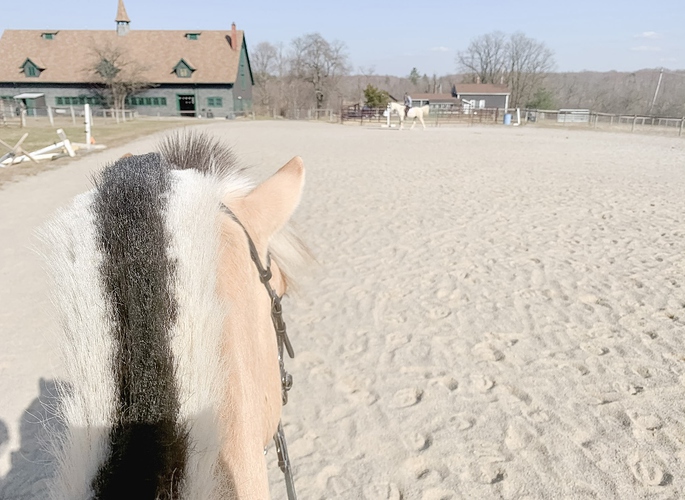After some googling, it seems that I have the opposite problem than most trying to train the canter on the lunge line. We are solid at the walk and trot and are pretty good with upwards and downwards transitions and WHOA. Per Google, it seems many people have a hard time getting a canter from youngsters at all. Charlie will canter, but I’m 2 for 3 now with him bolting and having to let go of the line in the big arena. We had one good direction today! He picked it up and dropped back to the trot after about a stride twice which he got treated for. The other direction was a runaway.
We do have a round pen, but it’s small and it’s really sloppy footing right now which makes me nervous to have him really get going. (Arena and round pen are outdoors). I have visions of his back end slipping out and him getting something caught under a panel. I did take him in there after I caught him and got a halfway decent and responsive canter, but ended it in a high note quickly. He seemed awfully proud of himself after his runaway antics and then doing it in the round pen.
We don’t lunge regularly since he is so laid back so I’m planning start making a habit of doing it more frequently and drilling walk/trot/whoa etc.
I lunge him in his bridle with the line through the one side of his bit, over his head and then clip to the other side of the bit. I’m guessing for the canter the round pen is the best place to stay contained; would it be better to wait until the footing isn’t so messy in the spring and just keep at it more with the walk/trotting in the arena until then? Any other tips? I’ve not trained a horse to lunge before (well outside of our walk and trotting which is going well) LOL. I don’t want him to bolt off and have him or me get hurt, nor for it to be a habit asking for the canter in the arena. He’s like a fjord freight train when he does it.


